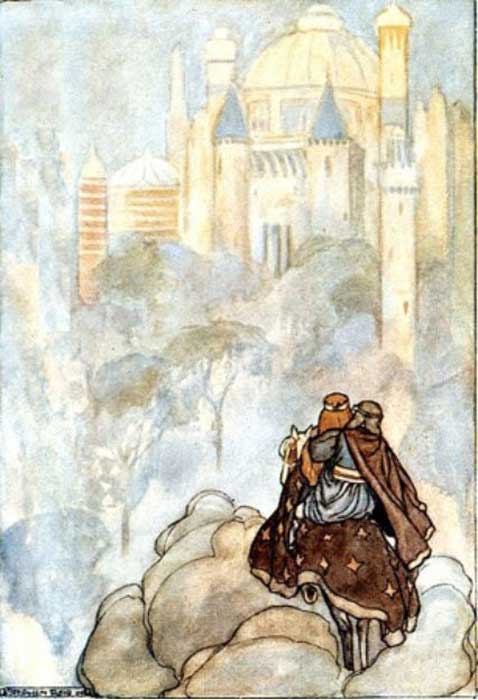I have been researching Arthurian legend a lot lately. From Ancient Origins:
Like many mythical paradise isles, Avalon has captured the imagination of generations of writers since the island was first mentioned by Geoffrey of Monmouth in his Historia Regum Britanniae or History of the Kings of Britain, written in 1136 AD. Many explorers and thinkers have tried to find the actual location of the legendary island, suggesting places in the Atlantic, the Mediterranean, and even places in the southern hemisphere. Some of the most popular suggestions for the location of Avalon include the Isle of Man and Glastonbury. Despite the popularity of the idea, there does not seem to be much evidence that Avalon was based on a real place and it may have been little more than a myth derived from earlier Celtic myths about otherworldly paradise islands.
According to the original legend, Avalon was an island full of wild apple trees, grapevines, and grain plants - which grew there instead of wild plants. Because of this, the people who lived there did not have to farm and lived out an idyllic existence. The name ‘Avalon’ in fact is related to the Proto-Celtic word “abal” meaning apple. The inhabitants of the island were also said to have very long lifespans. After King Arthur was mortally injured at the Battle of Camlann while fighting Mordred, legends say he was placed on a barge which took him to the island of Avalon. While there, King Arthur was healed and nourished back to health. It is said that King Arthur still remains there, alive, and will one day return when England needs him the most. (Read more.)
In the 1620's and 30's, during the reign of Charles I, Lord Baltimore founded a colony in Newfoundland which he called "Avalon" but the extreme winters drove him further south to what is now Maryland, named for Charles' Queen. It became the new Avalon. More HERE.



















No comments:
Post a Comment